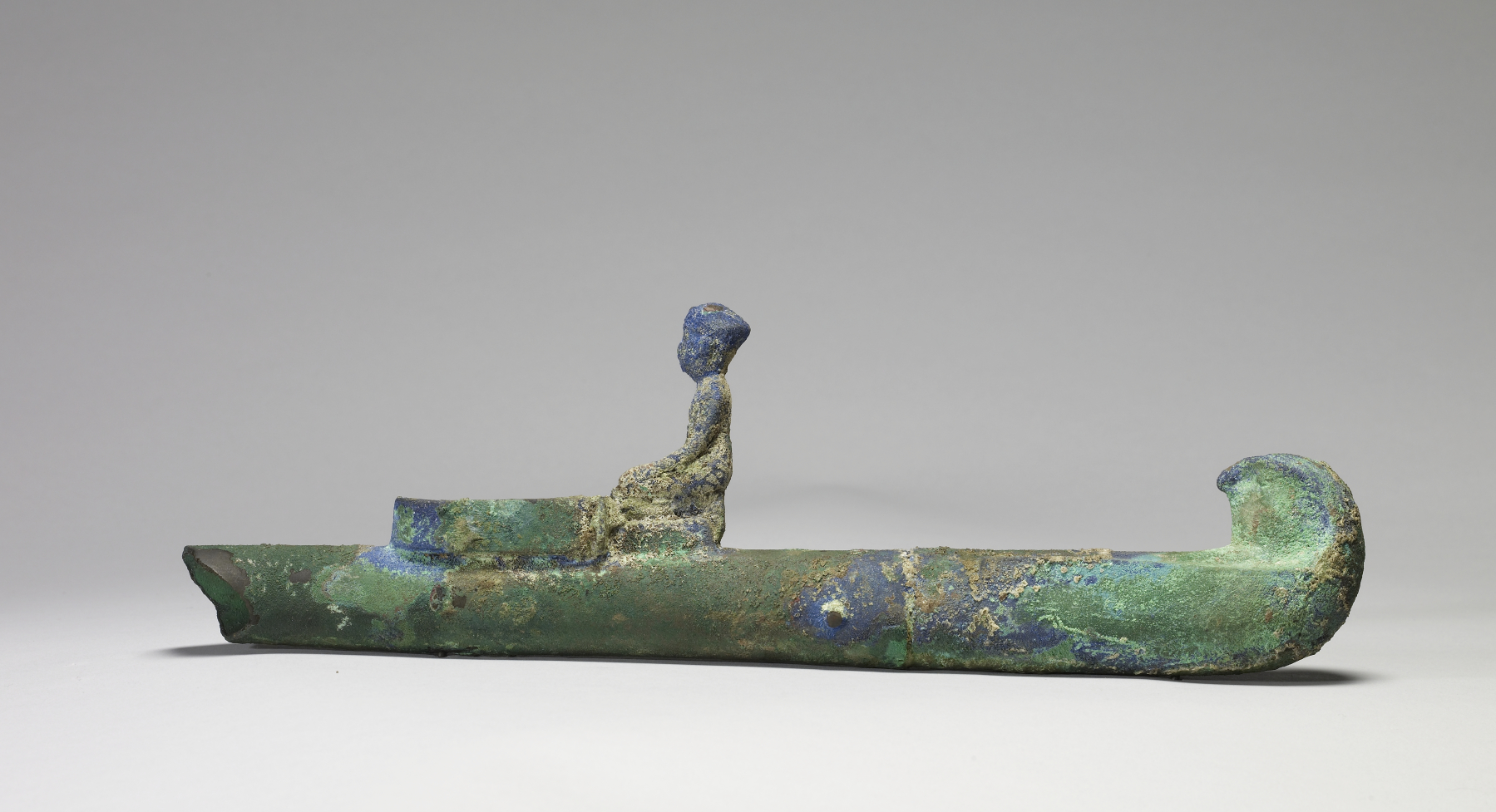Incense Burner
(Ancient Egypt and Nubia )
A staff of priests and priestesses performed the daily rituals of the Egyptian temple. A chief priest tended to the cult image of the temple's god or goddess, in the name of the king, who was thought to have daily need of food and clothing. Lesser ranking priests attended to offerings and performed the minor parts of the temple rituals. Incense burners were used extensively in temple and funerary ceremonies to purify the sacred space.
The handle of this incense burner ends in a falcon's head. At the center is a figure of a king kneeling before a cartouche-shaped pan that held incense pellets. The other end (now missing) was shaped like a hand holding a small pan for burning the incense.
Provenance
Provenance (from the French provenir, 'to come from/forth') is the chronology of the ownership, custody, or location of a historical object. Learn more about provenance at the Walters.
Dikran Kelekian, New York and Paris [date and mode of acquisition unknown] [said to be from Mit Rahina (Memphis), Egypt]; Henry Walters, Baltimore, 1909, by purchase; Walters Art Museum, 1931, by bequest.
Exhibitions
| 2013-2014 | Egypt’s Mysterious Book of the Faiyum. The Walters Art Museum, Baltimore. |
| 2008 | Faces of Ancient Arabia: The Giraud and Carolyn Foster Collection of South Arabian Art. The Walters Art Museum, Baltimore. |
Conservation
| Date | Description | Narrative |
|---|---|---|
| 4/30/1957 | Treatment | cleaned |
| 12/5/1986 | Treatment | stabilized; other |
Geographies
Egypt (Place of Origin)
Measurements
L: 12 3/16 in. (31 cm)
Credit Line
Acquired by Henry Walters, 1909
Location in Museum
Accession Number
In libraries, galleries, museums, and archives, an accession number is a unique identifier assigned to each object in the collection.
In libraries, galleries, museums, and archives, an accession number is a unique identifier assigned to each object in the collection.
54.498




